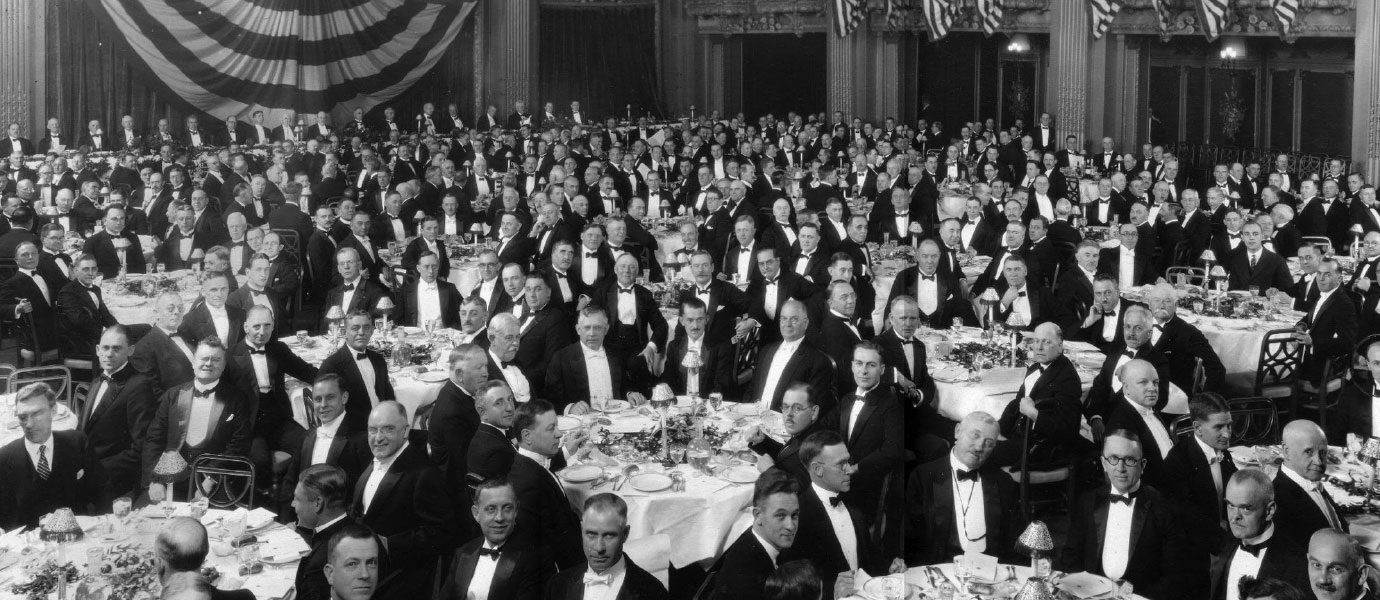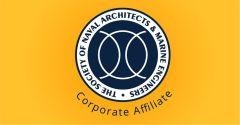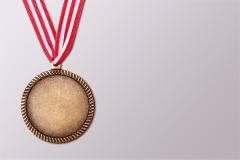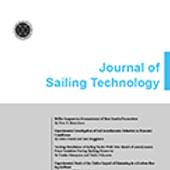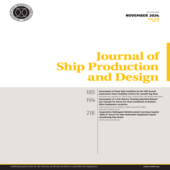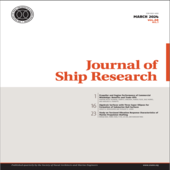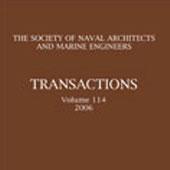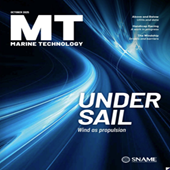Technical and research (T&R) | Bulletins and reports
T&R Bulletin 4-16 (2015) supersedes the existing T&R Bulletin 4-16 (1980).
The revision continues to focus on the calculations for HVAC but has introduced calculations unique to naval ships that can be applied to merchant ships. The revised Bulletin introduced calculations unique to naval ships but can be applied to merchant ships. There is a new section dedicated to the HVAC conversion factor and a section on humidity control. The Bulletin has a new section on ship’s air balance, demonstrated with examples in the cooling and heating seasons that air balance goes beyond supplying and exhausting the same volume of air. All sample forms were revised and included in the last section. Two examples were included to demonstrate the difference between a “push through” and a “pull-through” air conditioning system with demonstrative psychrometric charts. There is no implication of warranty by The Society of Naval Architects and Marine Engineers that use of this guideline will ensure the successful performance of vessels and/or machinery including compliance with contract specifications, Regulatory bodies, or classification societies.
This SNAME T&R Bulletin 4-16 (2023) revised the case numbers and equations numbers to enumerate the section in which they have been provided.
Section 3.6, HVAC Conversion Factor, has been modified to direct calculation of the HVAC Conversion Factor at the midway point between the outside air design temperature and the preheat temperature.
A dedicated Section 6.0, Machinery Spaces Ventilation and Air Conditioning has been added to the bulletin. Section 6.0 includes criteria for ventilated and air conditioned machinery spaces, sheds a light on the importance of the air expansion factor, provides detailed calculations for determining the ventilation supply and exhaust airflows, and provides guidance for underway and in-port heating analyses. Section 6.0 also includes a discussion on combustion air, both ducted directly from the weather and taken from the space.
A dedicated Section 7.0 has been added to discuss the use of Variable Frequency Drives (VFDs) in marine HVAC applications.
The bulletin has been revised to include internal hyperlinks for section names and equations. Additionally, all text within the document is now searchable.
Panel 0-21 has a mandate "To promote the development of ship management and engineering techniques concerning the conservation of energy and reduction of vessel operating costs." One of the first items which the Panel decided to address was the development of a publication containing guidelines for the most efficient and cost-effective residual fuel oil handling and combustion practices. This bulletin was consequently written to recommend particular hardware and operating practices and provide the engineering, economic and management rationale supporting those recommendations based upon the experiences and practices of Panel members. The wide variety of ship types, operating characteristics, and other circumstances existing in the marine industry dictate that there will surely be exceptions to every rule, and this bulletin requires interpretation by knowledgeable engineering managers to be applied, cost-effectively to specific vessels. Nevertheless, the recommendations included herein represent the consensus of the Panel and are being published with the intent of advancing practical marine engineering technology.
Panel 0-21 has a mandate "To promote the development of ship management and engineering techniques concerning the conservation of energy and reduction of vessel operating costs." One of the first items which the Panel decided to address was the development of a publication containing guidelines for shipboard energy audits and personnel motivation for energy conservation. This bulletin was consequently written to recommend particular practices and provide the economic and management rationale supporting those recommendations based upon the experiences and practices of Panel members. The wide variety of ship types, operating characteristics, and other circumstances existing in the marine industry dictate that there will surely be exceptions to every rule, and this bulletin requires interpretation by knowledgeable engineering managers to be applied to specific vessels. Nevertheless, the recommendations included herein represent the consensus of the Panel and are being published with the intent of advancing practical marine management techniques.
The performance of any coating system depends upon many factors, among which are
(l) the quality of surface preparation
(2) the compatibility of the materials used in making up the complete coating system
(3) the dry film thickness of the paint system
This Guide prepared by the SNAME Technical and Research Program in cooperation with the Department of the Navy is directed to the first point - that of surface preparation. For the second and third points - refer to SNAME Technical and Research Bulletin 4-15 “Coating Systems Guide for Exterior Surfaces of Steel Vessels.”
Proper application of human factors criteria in designing ships reduces the probability of human error in operations and maintenance. Designers must consider the human being in the system and design for safe and efficient operation. This report describes the study conducted on the MCM-3 engineering scale models of the machinery spaces at Peterson Builders. It is intended to be used as a reference to help with the understanding of engineering scale models and their application for human engineering. The trend in the design of U.S. Navy ships is to incorporate human engineering into the design and ensure adequate consideration of human factors. The U.S. Navy requires scale models of the machinery spaces to be built for design and to be used to accomplish human engineering studies. The reduced scale model permits human engineering feedback during the design process. The scale model is a powerful tool to achieve systems integration and meet operability and maintainability objectives. This report identifies what can be done and how to plan to do it.
